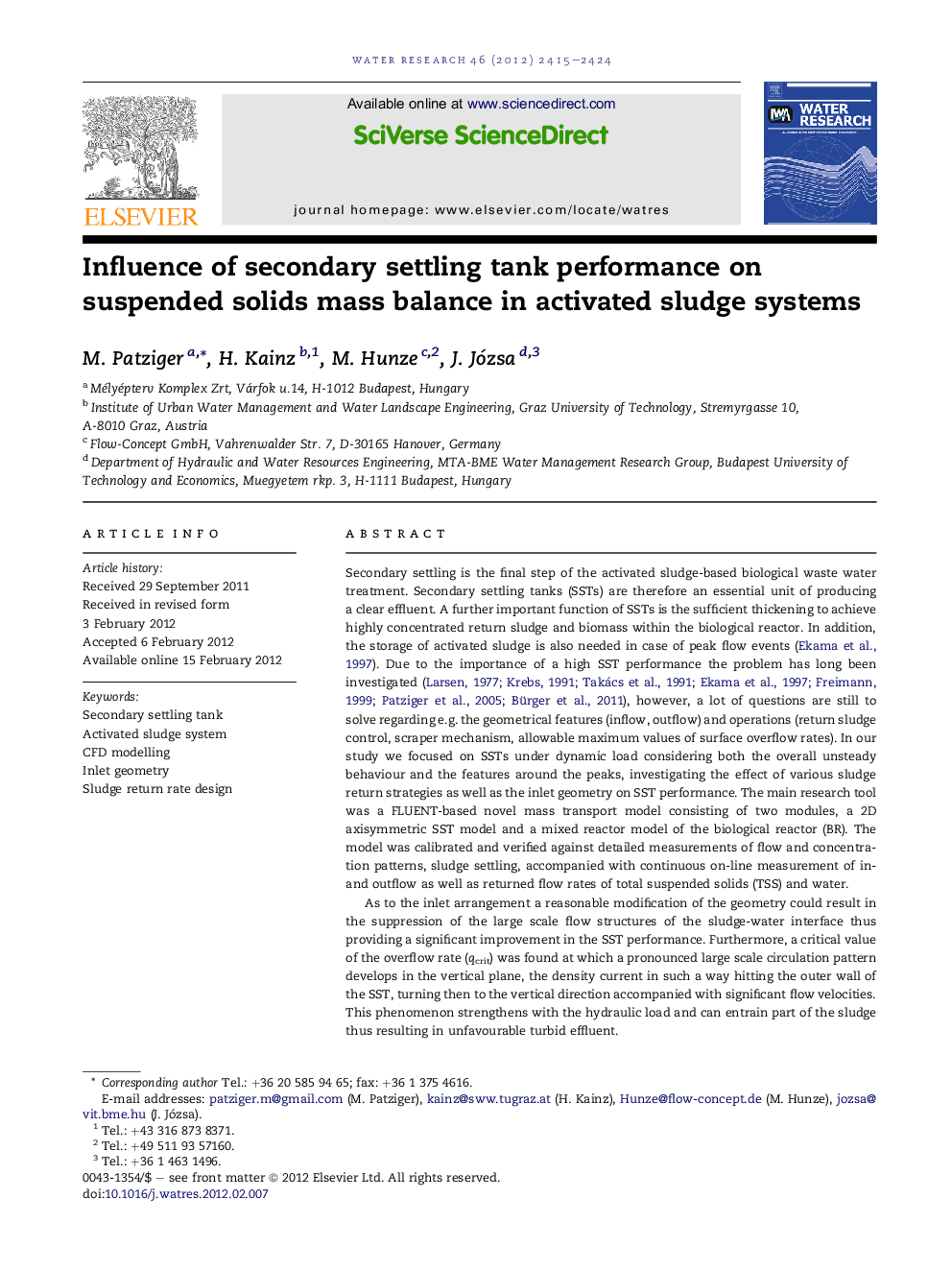| کد مقاله | کد نشریه | سال انتشار | مقاله انگلیسی | نسخه تمام متن |
|---|---|---|---|---|
| 4482944 | 1316873 | 2012 | 10 صفحه PDF | دانلود رایگان |

Secondary settling is the final step of the activated sludge-based biological waste water treatment. Secondary settling tanks (SSTs) are therefore an essential unit of producing a clear effluent. A further important function of SSTs is the sufficient thickening to achieve highly concentrated return sludge and biomass within the biological reactor. In addition, the storage of activated sludge is also needed in case of peak flow events (Ekama et al., 1997). Due to the importance of a high SST performance the problem has long been investigated (Larsen, 1977, Krebs, 1991, Takács et al., 1991, Ekama et al., 1997, Freimann, 1999, Patziger et al., 2005 and Bürger et al., 2011), however, a lot of questions are still to solve regarding e.g. the geometrical features (inflow, outflow) and operations (return sludge control, scraper mechanism, allowable maximum values of surface overflow rates). In our study we focused on SSTs under dynamic load considering both the overall unsteady behaviour and the features around the peaks, investigating the effect of various sludge return strategies as well as the inlet geometry on SST performance. The main research tool was a FLUENT-based novel mass transport model consisting of two modules, a 2D axisymmetric SST model and a mixed reactor model of the biological reactor (BR). The model was calibrated and verified against detailed measurements of flow and concentration patterns, sludge settling, accompanied with continuous on-line measurement of in- and outflow as well as returned flow rates of total suspended solids (TSS) and water.As to the inlet arrangement a reasonable modification of the geometry could result in the suppression of the large scale flow structures of the sludge-water interface thus providing a significant improvement in the SST performance. Furthermore, a critical value of the overflow rate (qcrit) was found at which a pronounced large scale circulation pattern develops in the vertical plane, the density current in such a way hitting the outer wall of the SST, turning then to the vertical direction accompanied with significant flow velocities. This phenomenon strengthens with the hydraulic load and can entrain part of the sludge thus resulting in unfavourable turbid effluent.As a representative case study an operating circular SST most commonly used in practice was investigated. Focusing on the sludge return strategies, it was found that up to a threshold peak flow rate the most efficient way is to keep the return sludge flow rate constant, at 0.4QMAX. However, once the inflow rate exceeds the threshold value the return sludge flow rate should be slowly increased up to 0.6QMAX, performed in a delayed manner, about 20–30 min after the threshold value is exceeded. For preserving the methodology outlined in the present paper, other types of SSTs, however, need further individual investigations.
Figure optionsDownload high-quality image (121 K)Download as PowerPoint slideHighlights
► The research tool was a coupled SST and biological reactor model.
► The model was calibrated and verified against detailed measurements.
► The inlet geometry and return sludge control features of a SST were evaluated.
► Improved geometry and sludge return strategy led to enhanced SST performance.
► Surface overflow rate critical to avoid turbid outflow was identified.
Journal: Water Research - Volume 46, Issue 7, 1 May 2012, Pages 2415–2424